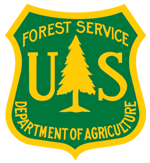National Association of State Foresters Weekly Newsletter June 6, 2025
NASF News
The National Association of State Foresters has an immediate opening for Vice President, Fire Programs [NASF Job Board]
This is a senior leadership position providing subject matter expertise and analysis of wildland fire issues as staff to executive management and the NASF Wildland Fire Committee. Serves as principal advisor for communications and policy positions related to wildfire. Advances state forestry priorities and partnerships in an interagency wildland fire environment. Requires extensive experience in all aspects of wildland fire management, state forestry programs, and wildland fire operations. Requires expert knowledge of federal agency legislation, polices, and political processes related to wildland fire. This is a remote position requiring frequent travel.
Out West
As Trump cuts U.S. Forest Service, California deploys an extra $72 million to reduce wildfire risk and 'rake the forest,' fast-tracks critical projects [Office of Governor Gavin Newsom]
(Pressrelease) CAL FIRE is awarding $72 million to projects across the state that help reduce catastrophic wildfire risk across California. Governor Newsom also announced 13 vegetation management projects spanning nearly 7,000 acres have already been approved for fast-tracking under his emergency proclamation.
More from California:
The Stanislaus Landscape Project: Charting a new course in western forest resiliency [USDA Forest Service]
From Colorado: Meet the NoCo neighborhood 'smokey bear' advocating for homeowner fire safety [KUNC]
Melanie Gaylord is the founder of Giant's Heart Wildfire, which shares free fire safety resources and tips with homeowners in Northern Colorado. She started the organization soon after evacuating during the Cameron Peak fire in 2020. "I'm not actually, technically any safer until they are," she said.
Sawmills in schools: New Idaho program prepares students for careers in logging, forestry [Northwest Public Broadcasting]
The Idaho Department of Education wants school districts to create new programs to prepare students, starting in seventh grade, to work in local industries. "Roughly $11 million has gone to natural resources and forestry programs in this part of the state, that's how much I believe in it," said Debbie Critchfield the Idaho Superintendent of Public Instruction. "We're now in the place where this is the talent pipeline."


























